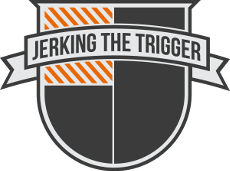I recently had a reader email me a question about where to find a specific barrier support device. The device in question was made by a company with a poor reputation for quality so I asked why he needed one so I could make alternate suggestions. He wanted one because he thought it would be a handy addition to his SHTF rifle. I recommended that he borrow/make a barrier to practice on and receive training before he determines if a barrier support device is right for him (I also gave him a number of alternatives in the event that he still wanted one). Barricade support devices are useful for specific barricades, in specific positions, and specific circumstances. In this case, there are a number of techniques utilizing the support hand that are probably more versatile than a barricade support device and that cost less in terms of money and weight.
JTT is a gear blog. Gear is what we focus on but we will readily admit that you probably don’t need 99.99% of what we talk about on a daily basis. When you focus on gear like we do, it is very easy to fall into the trap of trying to use gear to fill in gaps in your training. Before you part ways with your hard earned cash, there are a few questions that you should ask yourself about the gear you are about to purchase.
Is There a Training Solution to this Problem?
Before you spend money on gear, you should be asking yourself if there is a training solution to the perceived issue that you are trying to correct. In the case of the barrier support device, there were training based solutions and techniques that would likely address the reader’s problem (or perceived problem). A barrier support device is a hardware solution to a problem that can often be solved with software (training), or at least it is in this case.
If you can train your way around the need for a certain piece of gear, it may be worth your time to do so. In many cases, the training solution will be more versatile, adaptable, and will definitely weigh less than bolting another widget to your rifle.
What Will I Realistically Gain from This?
“Is there a training solution to this problem?” is a good question to ask but it won’t tell the whole story. In cases like iron sights versus optics, there are other considerations. You may be able to train to the point where you can use iron sights as effectively as optics in some situations (on the range in full light) but you may gain speed, the ability to operate in a wider range of conditions, ease of use, or other quantifiable advantages by using an optic over iron sights.
Quantifiable is the key word in the previous sentence. If you train with a focus and track your progress, you should have a baseline to compare performance with and without a piece of gear. At the very least, you will be more qualified to make these kinds of judgments accurately and impartially. If you cannot articulate or quantitatively prove a measurable improvement to your shooting with a piece of gear, it probably isn’t worth your money at that time.
Do I Actually Understand the Problem?
Of course, the above two questions assume a certain level of understanding of what the issues actually are. It may be that your first and best question when deciding on what to buy is “Do I actually understand the situation completely?” Do you know why you want/need the gear and do you know how to use it? Can you articulate the purpose of the gear? Is there actually an issue that needs to be addressed? Have I trained enough or do I have enough experience to know the difference? These are all questions that require humility to answer honestly.
An Example from Yours Truly
You can trust me on this subject because I happen to be an expert on buying things that I don’t actually need. When I was new to carbine courses and getting somewhat serious about training, I bought a vertical grip for my AR-15 just days before a 3 day carbine course. I held that vertical grip just like you would a hammer and quickly found it to be just about worthless. The rifle seemed top heavy and wobbled when it was driven from target to target. I had no idea how to use one but I saw them on so many cool looking rifles that I bought one. That vertical grip was removed after the first day of the 3 day course. Years later, I was actually taught how to use a thumb break grip on a vertical grip and how to effectively utilize it to pull the rifle back into my shoulder. What a world of difference!
My mistake was that I didn’t seek out a training solution before jumping to gear. I didn’t have a clue about what I expected to gain from the vertical grip other than looking cool. I didn’t even really understand how they should be used or even why they are used. This is obviously a terrible way to make decisions on how to spend money but it happens all the time in the world of “tactical” gear.
Time and Money are Both Costly!
There is nothing wrong with buying something just because you want it, but if you are expecting that gear to replace good old fashioned knowledge and know-how, you will be sorely disappointed. If you are lucky, you may just end up losing some money. If you aren’t, you may actually degrade your performance which will waste your time and money.




